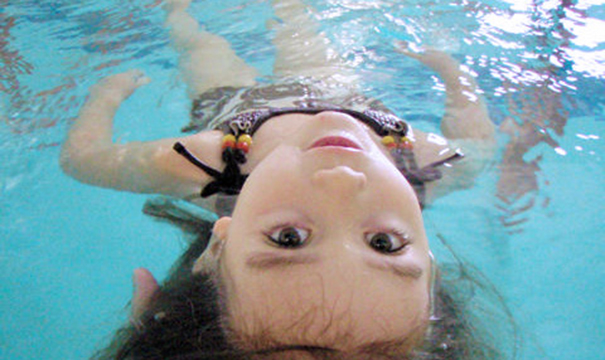
Do you really have to wait an hour after eating to swim?
No one is quite sure when or why parents began telling their children to wait an hour after eating before putting so much as a little toe in the pool. Two popular theories abound, one biological and the other social.
First – the biological one: It seems to be a concept that upon eating, most of the available blood in one’s body would flood to the stomach to help with digestion. And – the limbs – deprived of proper blood flow wouldn’t have enough blood in them to execute even a simple backstroke. This would leave the young swimmer to seize up with cramps and sink like a rock.
Second – the social one: A possible origin of this myth is that water safety concerns were much more lax in the ’50s and ’60s when there were few lifeguards watching the water for potential accidents. This left parents to be on constant watch. The hour break after eating provided the vigilant parents with a break from duty – enjoying 60 minutes of peace when they needed it most – after a meal.
While the “take a break” theory makes sense, is the blood flow theory plausible?
Fatal drowning statistics are quite high and many of the victims are children. However, how many of those children (or adults – for that matter) drowned because they had just downed a cheeseburger? Probably none.
It IS true that blood flows to our stomachs after eating a big meal. And that while there, it is busy absorbing nutrients. This does, logically, mean that less blood is available to deliver oxygen and remove waste products elsewhere in the body. But that does NOT mean that the two simultaneous activities cause such competing demand for blood that cramps occur.
The truth is that we have enough blood to keep all of our other parts running just fine – even after a meal. In fact, some competitive swimmers eat something immediately before a big meet to give them the energy they need to perform well. During exercise, our bodies produce adrenaline that actually helps deliver oxygen to the muscles that need it most.
So – if a cramp seized a swimmer in a particular part of his or her body, it’s highly unlikely that it would be severe enough to cause a drowning accident.
Of course, you should use common sense.
There are types (and quantities) of foods that would be better than others to eat just prior to swimming because of digestive speed. Simple carbohydrates like those in a bag of potato chips are more quickly used than the fat and protein in a burger. So jumping in to splash around after a big meal is fine but serious swimming isn’t likely to be fatal or dangerous – but would be less comfortable than ingesting lighter fare.
A theory suggests that cramps are caused by the weight of a full stomach tugging on the ligaments that hold it in place. True? That is still a question, but it is fact that a full belly can make any exercise uncomfortable and perhaps even lead to vomiting.
So what can we deduce from this? As long as you aren’t planning world-record breaking distances, a child who has just eaten is perfectly safe getting in the water. Looks like mom and dad will have to find a new excuse for taking a break after lunch!
The real danger is to adults who imbibe and swim.
The real danger in swimming after anything is not swimming after eating – but after drinking alcohol. This can be a deadly combination. The Centers for Disease Control (CDC) reports that up to half of all adolescent and adult deaths related to water recreation involve alcohol. Alcohol causes reactions to be slowed and coordination to be – well – lacking. It can also cause spasms in vocal chords as water enters the windpipe that can lock the airway closed.


Conversations